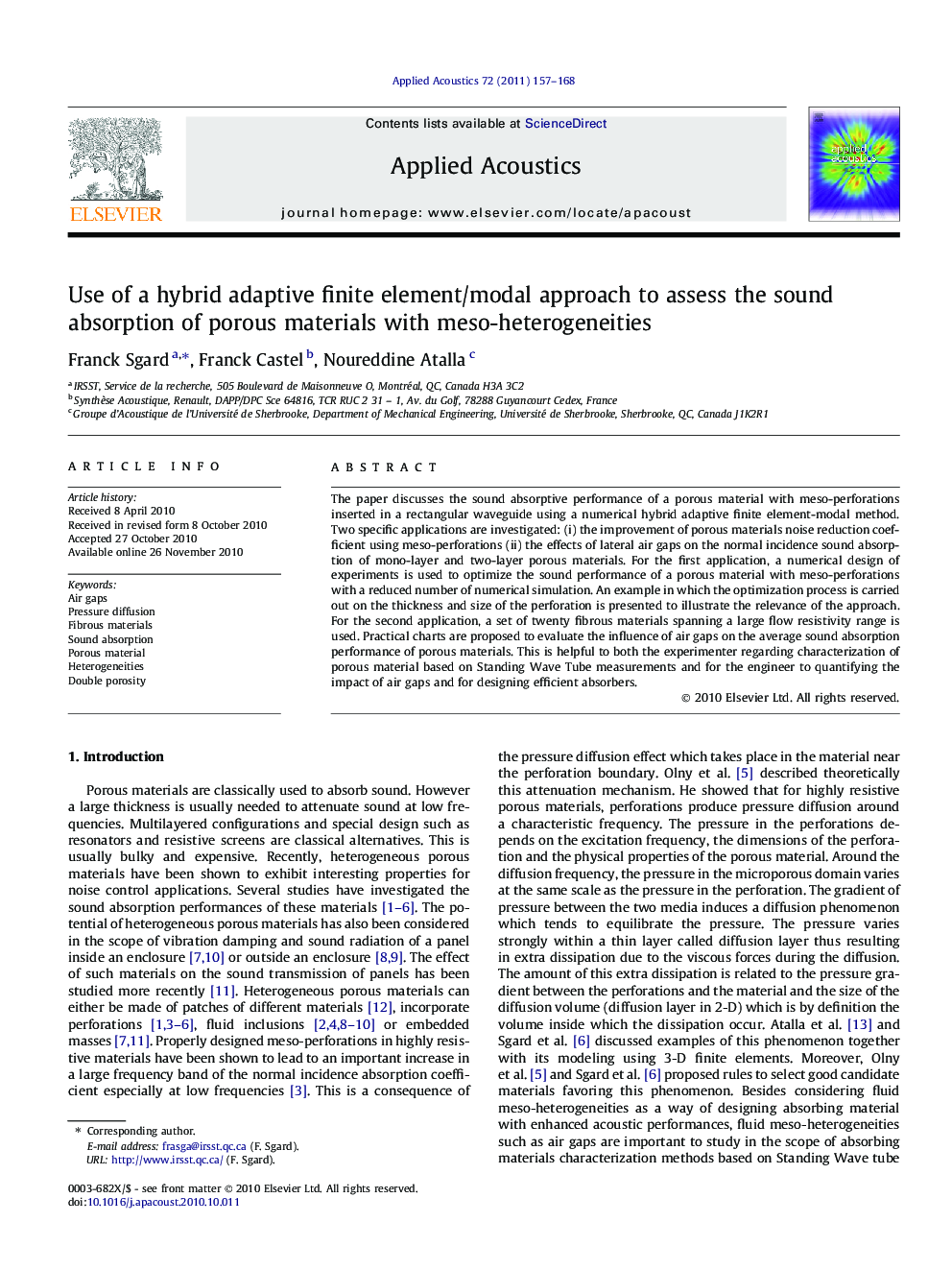| Article ID | Journal | Published Year | Pages | File Type |
|---|---|---|---|---|
| 754536 | Applied Acoustics | 2011 | 12 Pages |
The paper discusses the sound absorptive performance of a porous material with meso-perforations inserted in a rectangular waveguide using a numerical hybrid adaptive finite element-modal method. Two specific applications are investigated: (i) the improvement of porous materials noise reduction coefficient using meso-perforations (ii) the effects of lateral air gaps on the normal incidence sound absorption of mono-layer and two-layer porous materials. For the first application, a numerical design of experiments is used to optimize the sound performance of a porous material with meso-perforations with a reduced number of numerical simulation. An example in which the optimization process is carried out on the thickness and size of the perforation is presented to illustrate the relevance of the approach. For the second application, a set of twenty fibrous materials spanning a large flow resistivity range is used. Practical charts are proposed to evaluate the influence of air gaps on the average sound absorption performance of porous materials. This is helpful to both the experimenter regarding characterization of porous material based on Standing Wave Tube measurements and for the engineer to quantifying the impact of air gaps and for designing efficient absorbers.
Research highlights► Numerical method to predict acoustic behavior of meso-perforated porous materials. ► Design of experiments for optimizing absorption of meso-perforated porous materials. ► Charts to evaluate influence of air gaps on average absorption of porous materials. ► Useful for characterization of porous material based on SWT measurements. ► Useful for quantifying the impact of air gaps and for designing efficient absorbers.
